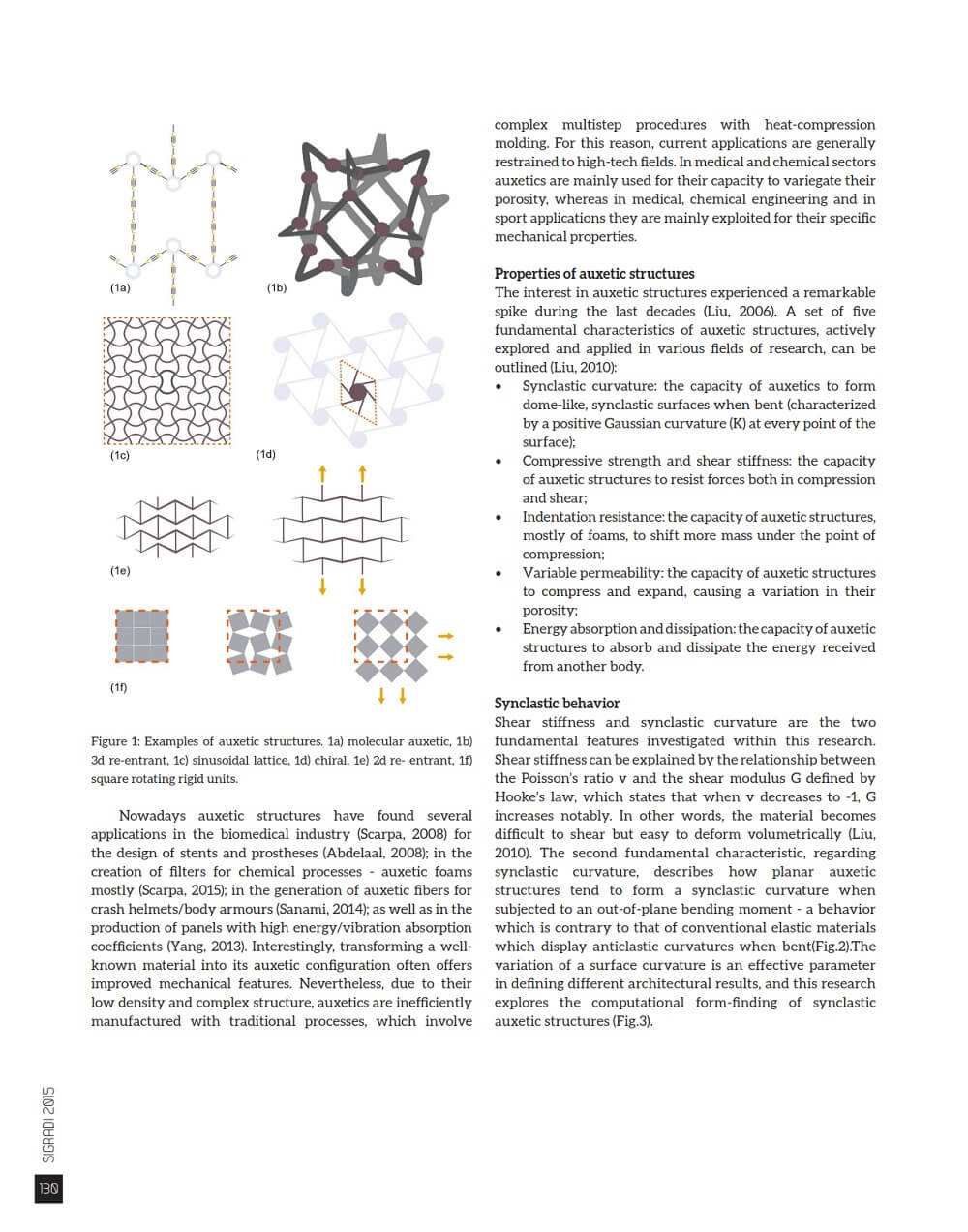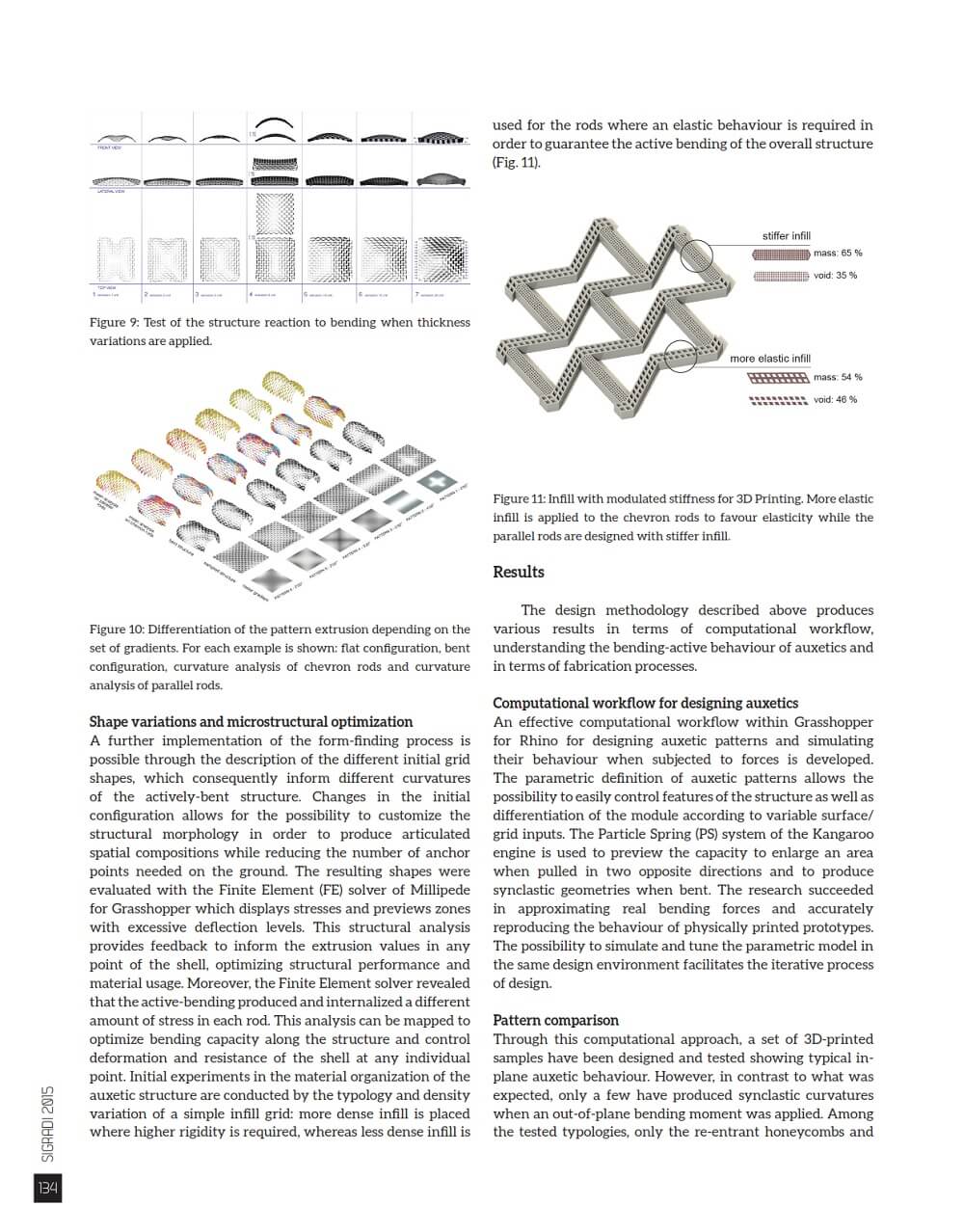
String Art Generator
String Art Generator by Yiran is a grasshopper plugin which generates a string art sequence based on an input image. You can


The paper by Roberto Naboni and Lorenzo Mirante investigates the potential of auxetics in architectural applications by means of computational design and additive manufacturing. This class of metamaterials expresses interesting behaviour related to the unusual characteristics of a negative Poisson’s ratio. Different patterns have been studied through a design workflow based on parametric software and the use of Particle Spring systems to support the form-finding process of bending-active auxetic structures.

An advanced understanding of their bending capacity is explored with the use of variable infill patterns informed by structural analysis. Furthermore, principles for the design and fabrication of auxetic gridshells are discussed.


String Art Generator by Yiran is a grasshopper plugin which generates a string art sequence based on an input image. You can

This paper by Alessandro Liuti, Sofia Colabella, and Alberto Pugnale, presents the construction of Airshell, a small timber gridshell prototype erected by employing a pneumatic formwork.

In this paper by Gregory Charles Quinn, Chris J K Williams, and Christoph Gengnagel, a detailed comparison is carried out between established as well as novel erection methods for strained grid shells by means of FE simulations and a 3D-scanned scaled physical model in order to evaluate key performance criteria such as bending stresses during erection and the distance between shell nodes and their spatial target geometry.

In this paper by Frederic Tayeb, Olivier Baverel, Jean-François Caron, Lionel du Peloux, ductility aspects of a light-weight composite gridshell are developed.
Parametric Ideas for Architects @2025